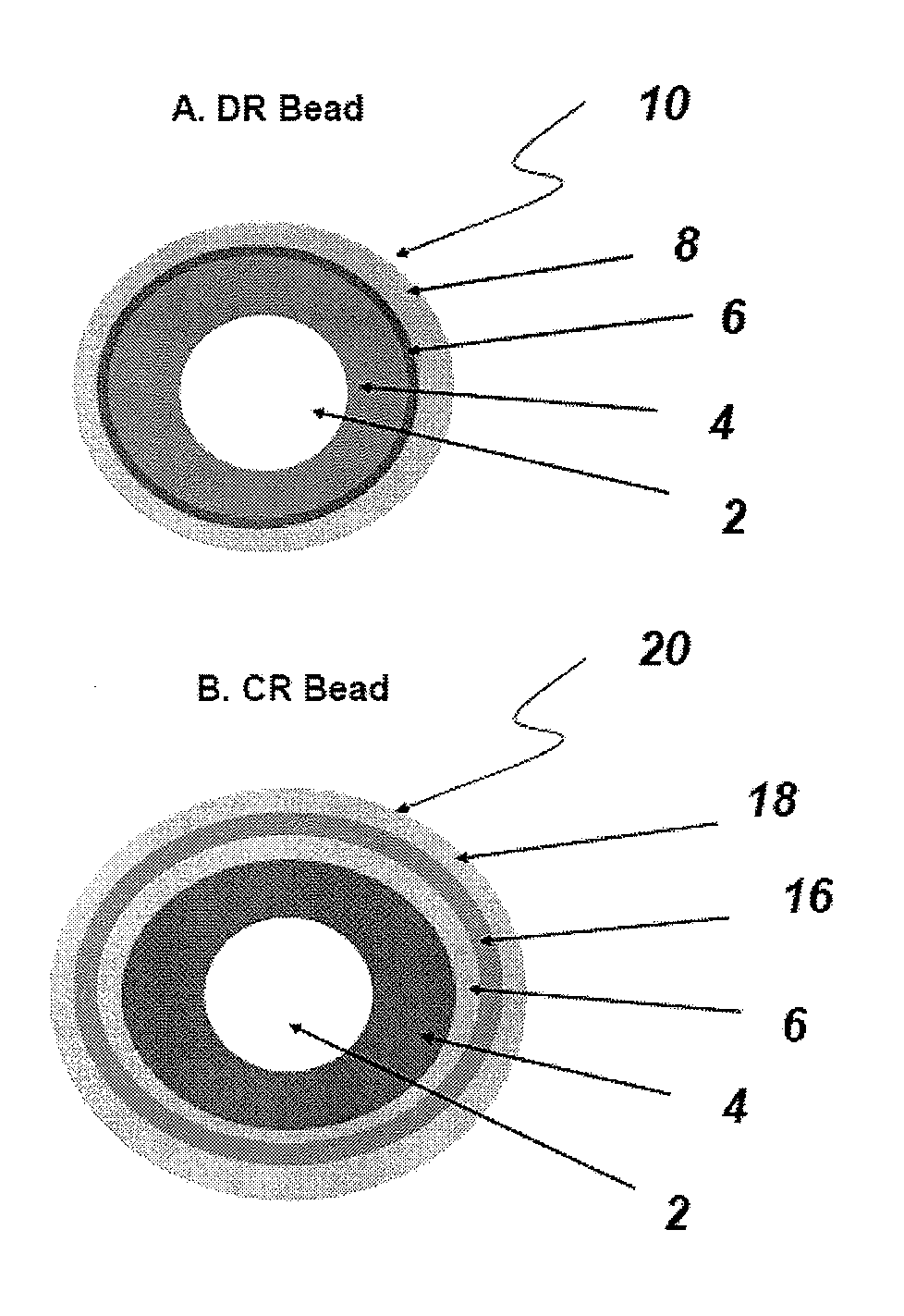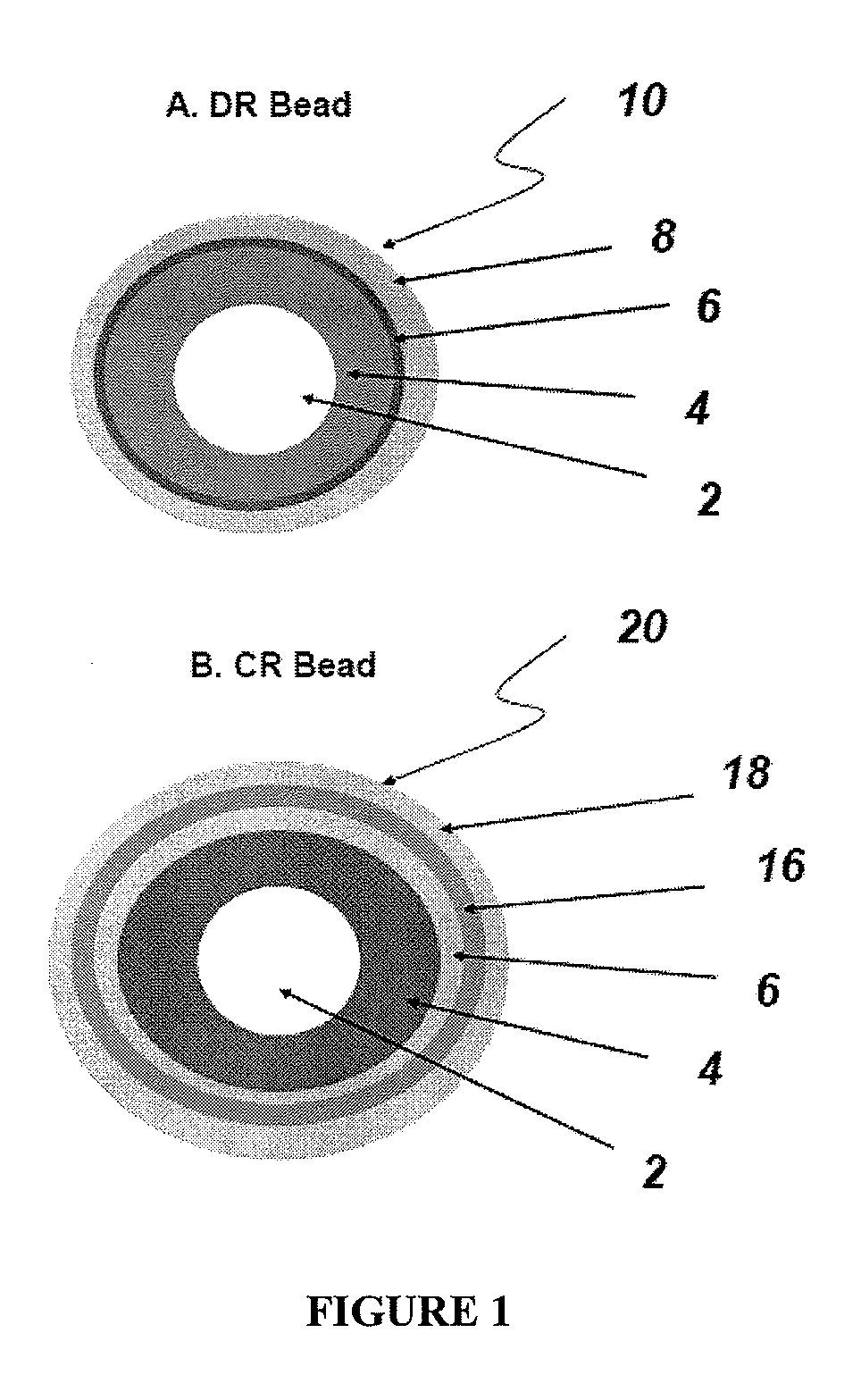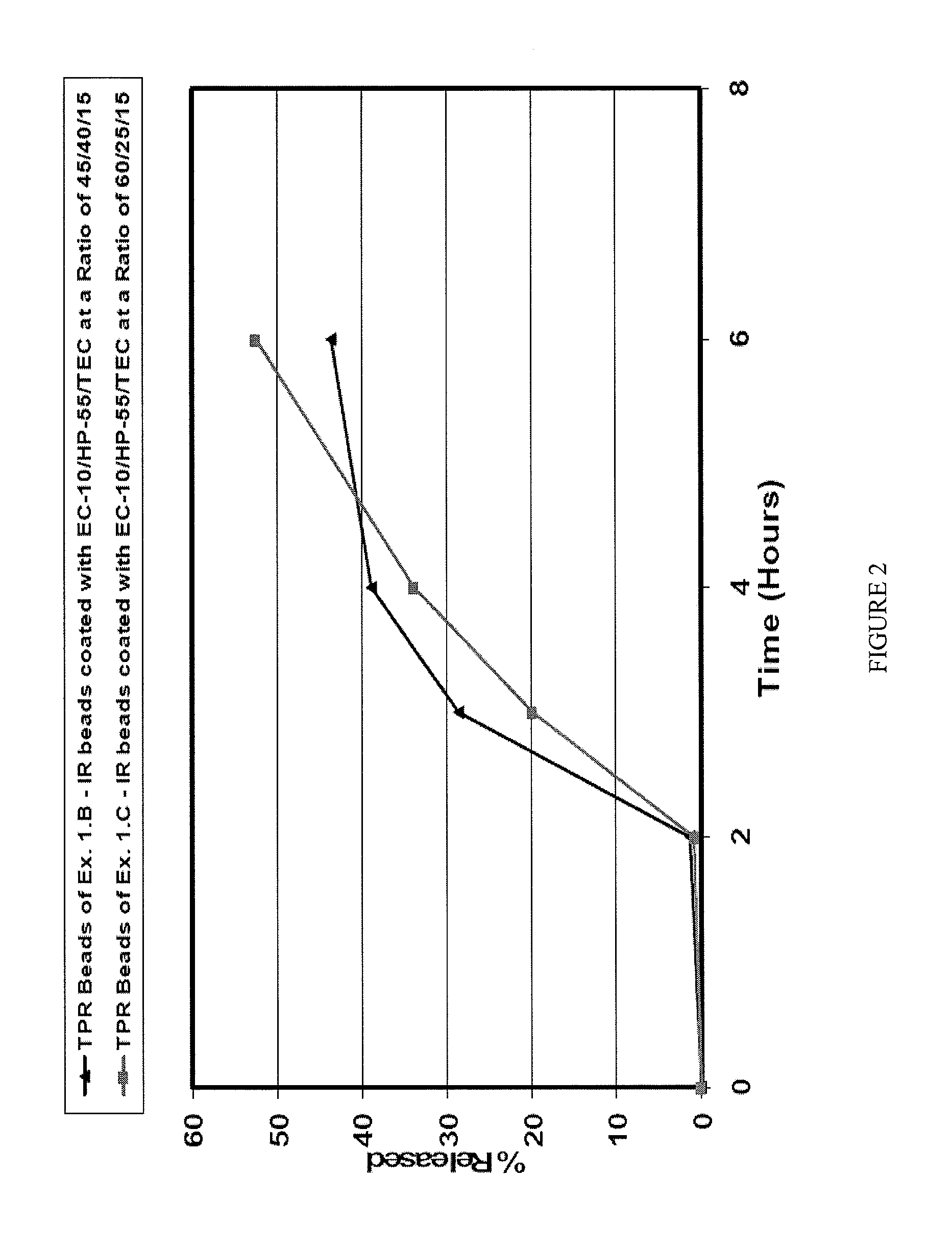Controlled-release compositions comprising a proton pump inhibitor
a technology of proton pump and composition, which is applied in the direction of drug composition, biocide, colloidal chemistry, etc., can solve the problems of nocturnal acid breakthrough (nab), the release of ppi from a dosage form (even extended release) typically does not provide relief, and the full course of a day of ppi release is not effectiv
- Summary
- Abstract
- Description
- Claims
- Application Information
AI Technical Summary
Benefits of technology
Problems solved by technology
Method used
Image
Examples
example 1
1.A Pantoprazole Sodium IR Beads at a drug load of 20%
[0091]Klucel® LF (120 g Hydroxypropylcellulose) was slowly added to ethanol 96% (2625 g) until dissolved under constant stirring for not less than 10 min. Pantoprazole sodium (880 g) was then added to the polymer binder solution until dissolved. Then micronized magnesium oxide (293 g) was homogeneously suspended in the Klucel® / ethanol solution. A Glatt GPCG 3 equipped with a 7″ bottom spray Wurster 8″ high column, partition column gap of 15 mm from the ‘B’ bottom air distribution plate covered with a 200 mesh product retention screen (1.2 mm port nozzle) was charged with 2832 g of Cellets 200 (200-355 μm microcrystalline cellulose spheres from Glatt) which were predried to reduce the moisture content to 1% and sprayed with the pantoprazole solution (33% solids) at an initial rate of 16-18 g / min at an inlet air volume of 80-125 m3 / hr, air atomization pressure of 1.8 bar while maintaining the product temperature of 30-35° C. The fi...
example 2
2.A Pantoprazole CR Beads (DR Coating on TPR (45 / 40 / 15 EC-10 / HP-55 / TEC) Coating)
[0096]Hypromellose phthalate (HP-55, 385.2 g) was slowly added to a 70 / 30 mixture of acetone and water while stirring constantly until dissolved followed by the addition of triethyl citrate (TEC; 42.8 g), until the triethyl citrate was dissolved. The TPR beads at 30% coating (1000 g) from Example 1.B, above, were fluid-bed (Glatt 3 with 6″ Wurster insert (15 mm gap)) coated with the hypromellose phthalate solution (6% solids) at a product temperature of 35±1° C., atomization air pressure of 1.5 bar, inlet air flow of 70-110 m3 / hr, and a spray flow rate of 9-12 g / min for a DR coating level of 30% by weight. The resulting CR beads were dried in the Glatt unit for 30 min to drive off residual solvents. About 85% by weight of the coated beads had a size smaller than 500 μm.
[0097]FIG. 3 shows the drug release profiles from CR beads of Example 2.A at 15% w / w or 30% w / w DR coating disposed over 30% TPR coating ...
example 3
3.A Pantoprazole DR Beads (HP-55 / TEC at 90 / 10)
[0100]Hypromellose phthalate (HP-55; 229.5 g) was slowly added to a 70 / 30 mixture of acetone and water while stirring rigorously until dissolved. TEC (25.5 g) was added to the solution until dissolved / dispersed homogeneously. The IR beads (1000 g) from Example 1.A were fluid-bed coated with the hypromellose phthalate coating solution (6% solids) in the Glatt 3 equipped with the 6″ Wurster insert at a product temperature of 35±1° C., atomization air pressure of 1.5 bar, inlet air volume of 70-110 m3 / hr, and an initial flow rate of 9-12 g / min for a DR-coating level of 50% by weight. The samples pulled at a coating of 20% was also subjected to analytical testing (i.e., HPLC assay and drug release).
3.B Pantoprazole CR Beads (TPR-Coating (EC-10 / HP-55 / TEC at 60 / 25 / 15 on DR-Coating)
[0101]The IR beads (1000 g) from Example 1.A were coated with the DR coating formulation (hypromellose phthalate / triethyl citrate at a ratio of 90 / 10 at 6% solids) i...
PUM
| Property | Measurement | Unit |
|---|---|---|
| lag time | aaaaa | aaaaa |
| lag time | aaaaa | aaaaa |
| lag time | aaaaa | aaaaa |
Abstract
Description
Claims
Application Information
 Login to View More
Login to View More - R&D
- Intellectual Property
- Life Sciences
- Materials
- Tech Scout
- Unparalleled Data Quality
- Higher Quality Content
- 60% Fewer Hallucinations
Browse by: Latest US Patents, China's latest patents, Technical Efficacy Thesaurus, Application Domain, Technology Topic, Popular Technical Reports.
© 2025 PatSnap. All rights reserved.Legal|Privacy policy|Modern Slavery Act Transparency Statement|Sitemap|About US| Contact US: help@patsnap.com



